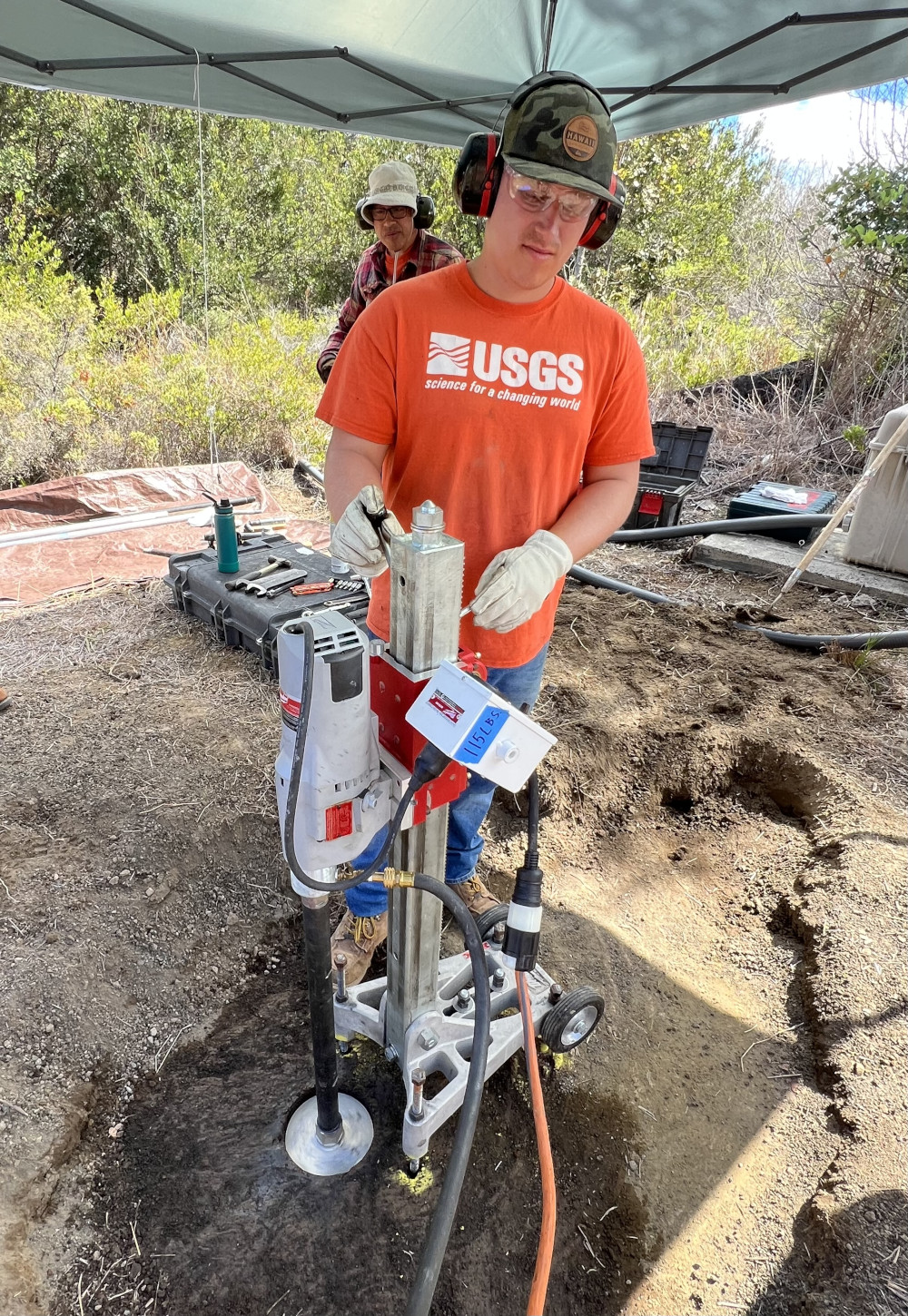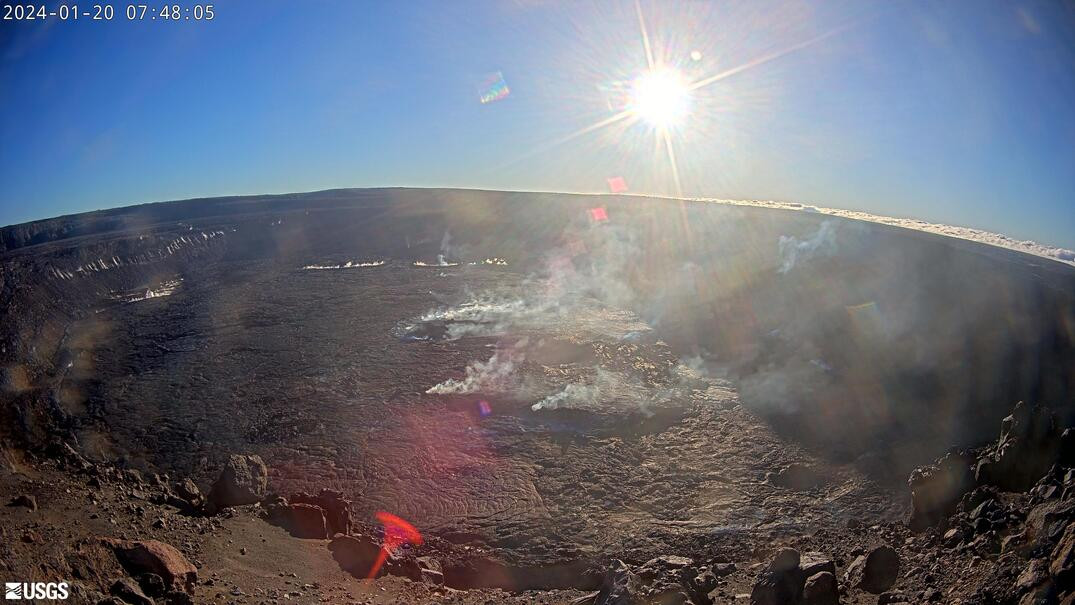(BIVN) – Kīlauea is not erupting, and scientists with the USGS Hawaiian Volcano Observatory continue to closely monitor the volcano, using a variety of tools and methods.
From this week’s Volcano Watch article written by Research Corporation of the University of Hawaii technician Miki Warren:
Technicians at the USGS Hawaiian Volcano Observatory (HVO) are constantly engineering, building, deploying, maintaining, troubleshooting, or upgrading equipment and instruments that we use to monitor Hawaii’s active volcanoes. This week’s “Volcano Watch” article focuses on the installation process of newly upgraded seismometers that are used to detect and locate earthquakes.
After the 2018 lower East Rift Zone eruption and summit collapse of Kīlauea, Congress allocated funding to HVO via the Additional Supplemental Appropriations for Disaster Relief Act of 2019 (H.R. 2157). Part of the funding was used to restore monitoring stations damaged or lost during the 2018 Kīlauea events. Part of the funding was also used improve or update other existing volcano monitoring sites around the Island of Hawaiʻi.

USGS field engineering technician Seth Swaney works on installing the borehole and upgrading seismic station AHUD, located south of Kaluapele and the summit of Kīlauea. USGS photo by M. Warren.
Many of the sites that were restored, or improved and upgraded, are seismic stations. While some of the seismic stations were disrupted during 2018, others were in need of improvement in data quality or transmission reliability. These factors are important for being able to accurately locate earthquakes and determine their magnitude, which in turn helps us to understand volcanic processes and associated hazards.
To help improve data quality, shallow boreholes are being drilled that will house new instruments and allow them to be thermally insulated. These new seismometers have both broadband and strong motion capabilities, and the seismic data quality is proving to be excellent.
The new boreholes, which are about 7 in (17 cm) in diameter and 5 feet (1.5 meters) deep also have a smaller footprint than older seismic site designs. Each drilled borehole takes about a week to complete before installing the new seismometer. The work is always done with permission from the landowners or land managing agency.
To effectively drill the borehole, the drilling frame is bolted to the ground surface and continually leveled at four points. A small amount of water is pumped through the drill bit to provide both cooling and lubrication of the bit during the drilling process. The drill is powered by a 5000-watt generator and operated by a USGS technician.
The drill bit may go through layers of both pāhoehoe and ʻaʻā, so it is a very slow and careful process. Once the full depth is achieved, the hole is lined with silica sand that will help to stabilize and thermally insulate the new instrument that is placed at the base of the hole.
The instrument is then completely covered with the silica sand and topped with a surface borehole cover. A conduit containing the instrument cables runs along the surface for about 15 feet (4.5 meters) to an electronics box and solar setup that will power the station. Data is then transmitted via radio to one of the hub stations and from there to the observatory, where it can be analyzed by a seismologist.
Once the drilling is complete and the new instrument is installed, it will run concurrently with the existing seismometer (if it is still operational) for a minimum of six months to verify the data. Eventually, the existing seismometer is removed.
With over 200 active seismic, geodetic, geochemical, and geologic instrumental sites on the Island of Hawaiʻi alone, there’s rarely any down time for HVO field engineering technicians. Their work maintaining, upgrading, and installing new stations located in remote areas allows us to monitor Hawaii’s active volcanoes.


by Big Island Video News8:00 am
on at
STORY SUMMARY
ISLAND OF HAWAIʻI - In this week's article, scientists detail the installation of new seismometers around Kīlauea volcano.